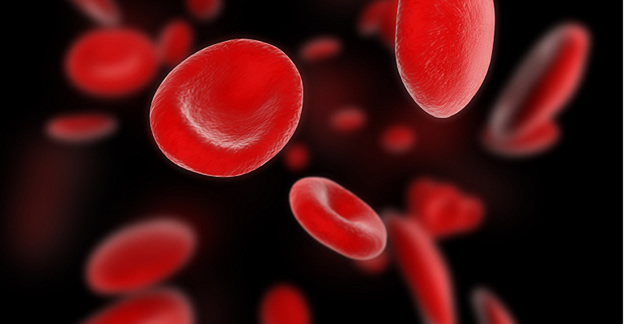Anticoagulants (blood thinners) have saved countless lives. If you are at risk for forming dangerous blood clots because of atrial fibrillation — an abnormal heart rhythm — or for any other reason, it’s likely you’ve been prescribed a blood-thinning drug, probably warfarin (Coumadin).
Starting in 2010, a new generation of blood thinners came on the market which have some benefits over warfarin, but some downsides of their own.
Anticoagulants are drugs that inhibit the production of various proteins made by the liver that cause clotting. “Clotting is a very important thing,” says Ronald Wharton, MD, assistant professor in the department of cardiology at Zucker School of Medicine at Hofstra/Northwell in Hempstead, New York.
“The problem is, sometimes we have to stop it or reduce the blood’s ability to clot,” in order to lessen the risk of stroke or pulmonary embolism (a blood clot that makes its way to the lungs), among other issues. In atrial fibrillation, which Dr. Wharton says is the most common reason blood thinners are prescribed, irregular heart rhythm can allow blood to pool in tiny crevices of the heart. It’s when that pooled blood forms clots and they travel to the brain that a stroke can occur.
According to the National Institute of Neurological Disorders and Stroke (NINDS) nearly 800,000 people in the U.S. have a stroke each year — and about 160,000 of them prove fatal.
Browse This Article
The Downside of Warfarin
Warfarin has been very effective in reducing strokes, but those who take it have to get frequent blood tests to monitor the drug’s effect on clotting factors made in the liver, which need vitamin K to be synthesized. (These tests, which can be scheduled anywhere from once a week to once a month, allow doctors to adjust dosages as needed). Warfarin also interacts poorly with a host of drugs: some antibiotics; antifungal drugs such as Monistat (miconazole); aspirin and other nonsteroidal anti-inflammatories such as Advil (ibuprofen); digestive-disorder drugs such as Pepcid (famotidine) and Zantac (ranitidine); and birth-control pills.
According to Penn State Hershey Medical Center, coenzyme Q10 (CoQ10) may decrease the effectiveness of warfarin and lead to the need for increased doses. Since warfarin must be monitored very closely to maintain appropriate levels and steady blood thinning, CoQ10 should be used with warfarin only under careful supervision by a healthcare provider. (See MedShadow’s Pros & Cons of Taking CoQ10) Foods containing significant amounts of vitamin K may be problematic when taking warfarin, specifically green leafy vegetables (such as kale, collard greens, spinach, green leaf lettuce, and romaine lettuce).
Many patients who take warfarin may be at an increased risk of side effects of the drug since they are not knowledgeable about food and drug interactions associated with the medication. The results of a study evaluating warfarin patients’ understanding of the drug and interactions is of concern since the side effects can lead to stroke and bleeding complications, which can sometimes be fatal.
“Worldwide, warfarin causes the most deaths from drug-related side effects,” senior author Kjersti Oterhals, PhD, of the Haukeland University Hospital in Norway said in a statement. “Patients need to know what foods and drugs have an impact on how warfarin works, and what to do if they have symptoms of an overdose.”
The study, presented at a EuroHeartCare Conference, which is sponsored by the European College of Cardiology, included results of a questionnaire that was sent to 404 patients with aortic stenosis who were taking warfarin. About two-thirds of them were taking the drug because they had a mechanical heart valve, and about a quarter were taking the medication to treat atrial fibrillation.
“Worldwide, warfarin causes the most deaths from drug-related side effects”
They were given a questionnaire with 28 multiple choice questions about warfarin. On average, the participants answered 18 questions correctly. However, 22% only gave correct answers to fewer than half of the questions. Questions that were answered incorrectly tended to be about food and drug interactions and when to call a doctor. For example, when asked about which foods would interfere with warfarin — celery, carrots, coleslaw or green beans — only 25% correctly answered cole slaw. Most answered green beans. The survey also found that only 45% of respondents knew to go to a physician if they had diarrhea for more than one day. In addition, older patients tended to have more incorrect answers.
New Anticoagulant Choice: NOACs
In 2010, a new class of blood thinners, referred to as non–vitamin K oral anticoagulants (NOACs) also known as direct oral anticoagulants (DOACs), came onto the market that, like warfarin, aim to help prevent strokes and blood clots in people with atrial fibrillation. In October of that year, the FDA approved Pradaxa (dabigatran etexilate). That was followed by the FDA approval of Xarelto (rivaroxaban) in 2011. A year later, Xarelto was also approved to treat deep vein thrombosis (blood clots that occur in the lower leg and thigh) and pulmonary embolism. Eliquis (apixaban) was approved in December 2012, and Savaysa (edoxaban) in January 2015, also to decrease the risk of strokes and blood clots in individuals with atrial fibrillation. In 2017, Bevyxxa (betrixaban) was approved for extended-duration prophylaxis for deep vein thrombosis in acute medically ill patients.
While all of the NOACs were compared to warfarin in different clinical trials, they were not compared to each other in head-to-head trials, explains Dr. Wharton, so which of them is chosen often comes down to physician preference. And a big part of the new anticoagulants’ attractiveness to doctors, as well as patients, is that unlike with warfarin, regular blood monitoring isn’t considered to be as necessary. NOACs target other specific clotting factors that are not vitamin K-dependent, so their effectiveness isn’t thrown off by foods that contain significant amounts of vitamin K, such as green leafy vegetables.
That said, while the NOACs have fewer drug and food interactions, says Dr. Wharton, they do have to be carefully dosed based on the patient’s weight, age and kidney function.
The NOACs are not yet approved for use in patients who have mechanical heart valves, or who have kidney failure or an allergy to the drugs, says Joseph Christiana, MD, a cardiologist in New York’s Hudson Valley. Women who may become pregnant need to work with their doctors, and those having surgery or dental work should discuss any precautions that need to be taken.
The purported positives of NOACs, says Dr. Christiana, make them seem like a good choice for patients who dislike the dietary restrictions of warfarin, who are sensitive to vitamin K, or who aren’t great at complying with the necessary blood tests.
Serious Drug Interactions
But there’s a downside, and it’s significant. Any blood thinner can put patients at risk for spontaneous bleeding — when the drugs cause too much anticoagulation effect. NOACs are associated with the risk of major bleeding when combined with certain other drugs.
Researchers found four drugs in particular that cause serious interactions, according to a study in JAMA: amiodarone (used for arrhythmia), fluconazole (an antifungal), rifampin (for tuberculosis) and phenytoin (an anticonvulsant). The researchers examined data from the Taiwan National Health Insurance Database, which included 91,330 patients with nonvalvular atrial fibrillation who received at least one NOAC prescription. The results showed that some of these drug interactions could cause major bleeding in the brain as well as in the gastrointestinal and urinary tract.
In a study reported in the Canadian Medical Association Journal, researchers found that two commonly prescribed cholesterol-lowering drugs, Mevacor (lovastatin) and Zocor (simvastatin), taken along with Pradaxa, led to higher bleeding risks. Canadian researchers conducted a pair of studies on almost 46,000 people over 65 who began taking Pradaxa between 2012 and 2016. The bleeding risk was more than 40% higher in those who were also taking Mevacor or Zocor.
“We found no difference in the risk of stroke in patients receiving dabigatran who were prescribed lovastatin or simvastatin versus other statins,” said Tony Antoniou, PharmD, one of the researchers said. “However, an increase in the risk of bleeding requiring hospital admission or emergency department visits was seen with lovastatin and simvastatin compared with the other statins.” The bottom line is if you are taking Pradaxa and need to take a statin, avoid Mevacor and Zocor.
In a postmarketing FDA study on the safety and efficacy of Pradaxa versus warfarin in 134,000 Medicare recipients with nonvalvular atrial fibrillation, new users of Pradaxa had reduced risks of ischemic stroke, intracranial hemorrhage, and death. The risk of major gastrointestinal (GI) bleeding was higher with Pradaxa, but there was no difference in the risk of heart attack.
When warfarin causes uncontrolled bleeding, the situation can be immediately reversed by giving the patient vitamin K or a drug called Kcentra. In 2015 the FDA granted accelerated approval to the drug Praxbind (idarucizumab) for emergency use to reverse the blood-thinning effects of Pradaxa. Full approval for Praxbind was granted in 2018. In 2018, Andexxa (andexanet alfa) received accelerated approval from the FDA as a reversal agent for Xarelto and Eliquis. The FDA states that the use of anticoagulant therapy should be resumed as soon as medically appropriate following treatment with any of these reversal agents.
Even though reliable antidotes are available for most of these anticoagulants, patients using NOACs can run into trouble when they experience excessive bleeding. Thousands of patients have filed lawsuits against the manufacturers of some of these drugs when they ran into problems with excessive bleeding. In addition, there’s been evidence to suggest that, in fact, patients on these drugs can benefit from regular blood monitoring.
Lawsuits and Antidote Development
According to DrugWatch.com, more than 6,000 people who suffered damaging side effects linked to Pradaxa, including gastrointestinal, rectal and brain bleeding, filed lawsuits against the drug’s manufacturer, the German company Boehringer Ingelheim Pharmaceuticals (BI). Most of those suits were compiled into multidistrict litigation that was settled in May 2014, when BI agreed to a $650 million settlement that involved no admittance of wrongdoing.
Thousands of additional suits are pending and slowly making their way through the courts. A spokesperson for BI said the company stands by Pradaxa: “We are confident in Pradaxa’s benefits and safety, which were established in five pivotal trials that collectively included more than 27,000 patients and were conducted without the use of an antidote.”
Pradaxa is not alone: Since 2011, when Xarelto was approved by the FDA to treat atrial fibrillation, there have been over 25,000 lawsuits regarding adverse side effects involving the drug. The lawsuits allege that Xarelto users suffered from internal bleeding, wound leakage and infections, hemorrhagic strokes, or brain bleeds and that the drug’s manufacturer failed to warn about bleeding risks.
According to Drugwatch, in 2019 Xarelto manufacturers Johnson & Johnson and Bayer Corporation agreed to settle virtually all remaining lawsuits for $775 million, while not admitting any liability and denying claims that they did not warn patients of the bleeding risks. A German magazine, Der Spiegel, published an article about the extraordinary amount of reported side effects in Germany from the drug Xarelto in 2012 and 2013 alone. They state that in eight months in 2013 there were 968 cases of suspected side effects, including 72 deaths, and in 212 there were 750 cases of side effects, including 58 deaths. (See MedShadow’s Should You Keep Taking Xarelto?)
Claiming similar adverse events and negligence, nearly 300 lawsuits have been filed against the makers of Eliquis.
Which Blood Thinner is Best for You?
Side effects and safety are major factors when doctors and patients choose a drug, but of course cost factors in as well, says Dr. Christiana. In December 2019 the FDA approved apixaban, a generic version of Eliquis, which will be less expensive. However, the other NOACs have no generic versions, and it is unclear when generic apixaban will hit the market.
Warfarin can be purchased at discount store or warehouse club pharmacies for $4 for 30 5mg tablets (dosage will vary, depending on results of regular blood testing). Xarelto, which has a once-a-day dose, can cost upward of $450 per month, far pricier than warfarin at its lowest cost. That said, it may turn out that co-pays for the new drugs will come down when insurance companies see that warfarin-related hospital admissions decrease, and that patients require fewer blood tests, he adds. “All of the drug companies [that make the newer drugs] have excellent programs to help make them more affordable.”
In addition to cost, there’s the question of patients wanting to make a switch to a different drug. Those who live in rural areas may find that one advantage of the newer drugs, says Dr. Christiana, is not having to travel to hard-to-access clinics for blood testing. Some patients are also convinced when they learn they no longer have to monitor their intake of foods high in vitamin K.
…the use of aspirin in patients without cardiovascular disease should not be routinely recommended
For decades it was recommended that people with atrial fibrillation who don’t have other risk factors could benefit from taking a daily aspirin to prevent blood clots. But in recent years doctors have realized that people without cardiovascular disease should not take a daily low-dose aspirin, as the benefit in reducing heart attack and stroke is relatively modest but is associated with an increased risk for serious internal bleeding.
Researchers conducted a meta-analysis of 13 trials involving more than 164,000 patients that examined aspirin use to prevent heart attack or stroke in those with and without cardiovascular disease. While aspirin use was associated with a lower risk of cardiovascular events, it was also associated with an increased risk of major bleeding, according to results presented in JAMA.
“We found that for every 265 patients treated with aspirin for five years, one heart attack, stroke or death from cardiovascular disease would be prevented,” Sean Zheng, MA, Imperial College London, said in a statement. “On the other hand, for every 210 patients treated with aspirin over the same period, one would have a serious bleeding event.”
Some guidelines recommend using aspirin to prevent cardiovascular events in those deemed at high risk or those with diabetes. But researchers say their study indicates those guidelines may need to be reconsidered.
“Our study shows that in [high-risk] groups, cardiovascular benefit and bleeding risks were matched with no clear evidence of a net benefit,” Zheng said. “This suggests the use of aspirin in patients without cardiovascular disease should not be routinely recommended.”
In another study researchers examined 11 clinical trials comparing low-dose aspirin to placebo in more than 157,000 adults without atherosclerosis, a condition in which fatty deposits accumulate in the arteries, causing the blood vessels to thicken.
Results, published in the European Heart Journal, showed that compared to those taking a placebo, the rates of heart attack, stroke and death weren’t any lower. Also, those on aspirin were nearly 50% more likely to have major bleeding compared to those on placebo.
“Many professionals have a hard time believing that aspirin may not be so beneficial because there has been such a widespread and favorable view of this medication,” co-author Anthony A. Bavry, MD, cardiologist and professor at the University of Florida School of Medicine, said in a statement. “This certainly does not settle the debate, but it does call for a reappraisal of society’s overwhelmingly positive view of aspirin therapy.”
About 29 million Americans age 40 and older take low-dose aspirin for cardiovascular disease prevention, and nearly a quarter of those do it without a physician’s recommendation, according to a 2019 study.
Long-term aspirin use can lead to gastrointestinal bleeding, as well as nausea, vomiting, stomach pain and heartburn in some users.
So how do you know which anticoagulant to choose? In a very real sense, the amount of choice patients and doctors have regarding anticoagulants is breeding a lot more confusion than necessary, in large part because direct comparisons are not always possible. In the United States, there are millions of people with atrial fibrillation, says John Eikelboom, MD, associate professor in the department of medicine at McMaster University in Hamilton, Ontario, and a steering committee member for Pradaxa’s Phase III trial.
And stroke is the most common cause of permanent disability, according to the NINDS, with one-third to one-half of stroke victims dying or becoming permanently disabled. Everyone would agree that reducing stroke risk is important, but patients and doctors have to weigh whether the risk of bleeding is greater than the risk of stroke.
Side Effects Comparison
All drugs have the potential for side effects and warfarin and the newer anticoagulants are no different. The major side effect — common to all anticoagulants — is unwanted bleeding. For example, a study published in JAMA found that the use of any oral blood thinner was linked to significantly higher rates of hematuria (blood found in urine) complications, specifically among older adults. The study examined 808,897 patients who received at least one prescription for an anticoagulant or antiplatelet medication drug from 2002 to 2014.
After conducting a seven-year follow-up, researchers found the rates of hematuria-related complications, including emergency department visits, hospitalization, or a urologic procedure to investigate or manage noticeable hematuria, were 124 events per 1,000 person-years among patients actively exposed to the drugs vs. 80 events among patients not exposed.
Here’s what you need to know about warfarin and the newer drugs:
Warfarin (Coumadin)
Warfarin’s side effects include gas, abdominal pain, bleeding, bloating, bruising, change in the way things taste, loss of hair and feeling cold or having chills. According to the National Institutes of Health, warfarin patients who get hives; rash; itching; difficulty breathing or swallowing; swelling of the face, throat, tongue, lips or eyes; swelling of extremities; fever; diarrhea, loss of appetite or pain in the upper right part of the stomach should call their doctor immediately.
The NIH also suggests that, given the risk of bleeding, patients should avoid activities that might lead to an injury such as contact sports, and advises calling your doctor if you see dark red or black bruises. A rare side effect of warfarin therapy called “purple toe syndrome,” in which painful, purple lesions suddenly appear on the toes and sides of the feet wherever pressure is usually applied, may begin three to eight weeks after beginning warfarin therapy.
Pradaxa, Eliquis, Xarelto, Savaysa and Bevyxxa
All of the NOACs have similar side effects. The main side effect for all NOACs is bleeding with some research showing a possible higher risk of bleeding with Xarelto or Pradaxa compared to the others. Side effects for NOACs include indigestion, upset stomach or stomach pain, as well as the chance of an allergic reaction which could include hives, a rash, itching or swelling of the tongue.
Patients should call their doctors or seek immediate medical care if they experience: unexpected, severe or uncontrollable bleeding, or bleeding that lasts a long time; nosebleeds that happen often; unusual bleeding from gums; menstrual or vaginal bleeding that is heavier than normal; unusual or unexpected bruising; coughing up or vomiting blood, or vomit that looks like coffee grounds; pink or brown urine; red or black stools that look like tar; unexpected pain, swelling or joint pain or headaches and feeling dizzy or weak.
Taking NOACs with antidepressants can lead to serious interactions. Co-administration of NOACs with selective serotonin reuptake inhibitors (SSRIs) or serotonin-norepinephrine reuptake inhibitors (SNRIs), common antidepressants, increases the risk of bleeding. The herbal remedy St. John’s Wort taken with a NOAC will decrease the anticoagulation effect of the drugs.
Controlling Uncontrolled Bleeding
Getting a handle on uncontrolled bleeding used to be pretty straightforward when trauma surgeons were dealing only with warfarin. “Many trauma surgeons hate the newer anticoagulants because they don’t know how much is left in the system,” says Neil Zakai, MD, associate professor of medicine and pathology at the University of Vermont, and one of the authors of the American Society of Hematology 2018 guidelines for management of venous thromboembolism: prophylaxis for hospitalized and nonhospitalized medical patients. . It’s difficult, he says, to determine if the new drugs are contributing to the bleeding.
When confronted with uncontrolled bleeding, the physician needs to find the source of the bleeding and stop it with surgery or topical agents, administer blood transfusions if necessary and reversal agents if the bleeding is life-threatening. The physician will try to determine when the last dose of the anticoagulant was taken. If it has been about 24 hours — with the newer blood-thinners — Zakai said there won’t be much in the system. Wounds will clot, though he said it might take longer.
Overall, according to a study published in the BMJ, the newer anticoagulants do not have a higher risk of major bleeding compared with warfarin. A Canadian-based research team examined data in Canada and the United States from nearly 60,000 adults newly diagnosed with venous thromboembolism, a blood clot in a vein that if left untreated can be fatal, to compare the safety of NOACs with warfarin. About 12,500 were prescribed a NOAC and the rest were given warfarin. Patients were followed for an average of 85 days.
Overall, 3.3% of patients had a major bleeding event and 1.7% died. And the risk of major bleeding was the same for NOACs compared to warfarin. Bleeding rates at 30 days were between 0.2% and 2.9% for NOACs and warfarin, and at 60 days, the rates were between 0.4% and 4.3% for both.
There was also no difference in the risk of death between NOACs and warfarin. Results remained the same, even after a longer follow-up period of 180 days was examined.
“You have to balance the risk of bleeding with the risk of clotting,” says Dr. Zakai, as well as factoring in whether the drug will be used in the long term — for atrial fibrillation — or the short term — for something like a knee replacement.







